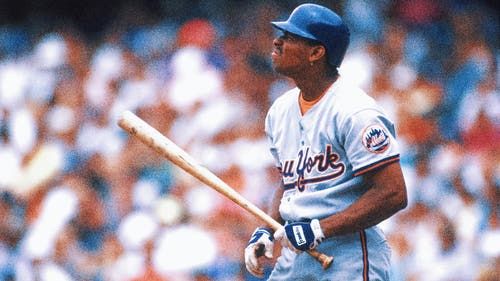
Column: Baseball needs to do more to protect fans
ATLANTA (AP) The sound was sickening, the ball smacking off the head of an 8-year-old boy.
Fortunately, after a couple of days in the hospital, the child was back home and said to be on the road to recovery.
Baseball may not be so lucky the next time.
With fans closer to the action than ever before - and a proposed new stadium for the Atlanta Braves promising to bring them even closer - it's time for major league officials to seriously consider some sort of extra protection for those in the seats, especially in the danger zones along the first- and third-base lines.
Maybe that involves putting extra netting over the dugouts and even farther down the foul lines, similar to what was done behind the goals in hockey after a young fan was killed by a puck at a 2002 NHL game. Maybe that involves some restrictions on how old you have to be to sit in the riskiest seats, at least reducing the chance of a small child sustaining a serious injury, which happened just the other night at Turner Field.
Of course, those suggestions would likely be met with plenty of resistance from the very fans who eagerly pay big bucks to sit as close to the field as possible, who would surely be perturbed if they had to watch the game through a screen or couldn't bring their kids along.
Two nights after that frightening incident in Atlanta, when that little boy was struck in the head during the Braves' game against Milwaukee, Krista Clark and her family landed seats behind the Atlanta dugout.
Clark wasn't the least bit concerned.
''Anything can happen anywhere we are, whether it's a ballgame or anywhere else,'' she said, while her 8-year-old daughter, Catherine, happily gobbled up a frozen treat in the next seat. ''We just try to have fun but be cautious, pay attention to what's going on around us.''
Early in the game, a foul ball came in their direction.
''My son and husband were trying to catch it. I ducked over her,'' Clark said, smiling as she looked toward her daughter. ''But I wouldn't ever not come to a game or not bring them out of worry.''
Nothing wrong with that, but MLB and its teams need to consider some common-sense arrangements to make fans safer. There may be some grumbling at first, but everyone will come around if the measures aren't too intrusive.
It's never been riskier to go to a game, given the rise in pitchers who can throw 90 mph, which increases the speed of line drives rocketing into the stands. Then consider how fans get closer and closer to the action with every new baseball-specific stadium that opens, plus the wide range of activities inside the park and on their smartphones that can take their eyes off the ball, and you've got a potentially lethal combination.
Chris Miranda, who runs a consulting firm that has worked with colleges on stadium safety, said it's only a matter of time before there's more protection in front of the stands at major league games. He only hopes it doesn't take a tragedy like the one in Ohio to make it happen.
A dozen years ago, Brittanie Cecil was struck in the left temple by a deflected shot at an NHL game in Columbus, Ohio. She walked out of the arena, but died two days later from a ruptured artery in her brain. She was two days shy of her 14th birthday.
If there had been protective netting behind the goal, which is now required in all NHL arenas, Brittanie would be 26 today, with so much of her life still ahead of her.
''I love baseball. I hope nothing like that ever happens,'' Miranda said. ''But it's getting closer. How many near-misses do you have to have before there's that one injury that isn't the normal injury, that might be the worst one of all.''
While Miranda acknowledges there would be significant costs associated with installing an extensive netting system at big league parks, it would surely be a puny percentage of the billions that baseball rakes in. It certainly sounds doable to extend the netting already in place behind home plate, holding it up with wiring attached to the upper levels. Softer popups - which present much less risk than line drives - could still reach the seats, giving fans a chance to grab those coveted foul balls.
Major League Baseball has already faced criticism over stadium safety, largely because of fans falling over railings with sometimes fatal results. A spokesman declined comment when reached by The Associated Press, citing pending legal issues.
Let's hope they're at least talking behind the scenes. Maybe, too, the powerful players' union could weigh in on the subject. Surely it doesn't want one of its members to go through the guilt and anguish experienced by Espen Knutsen, who took the shot that ended Brittanie Cecil's life.
Milwaukee's Carlos Gomez felt those same pangs when his liner struck that little boy at Turner Field.
''The ball comes really hard,'' said Gomez, a father himself. ''It can kill you, you know?''
Yep, we know.
---
Paul Newberry is a national writer for The Associated Press. Write to him at pnewberry(at)ap.org or on Twitter at www.twitter.com/pnewberry1963










